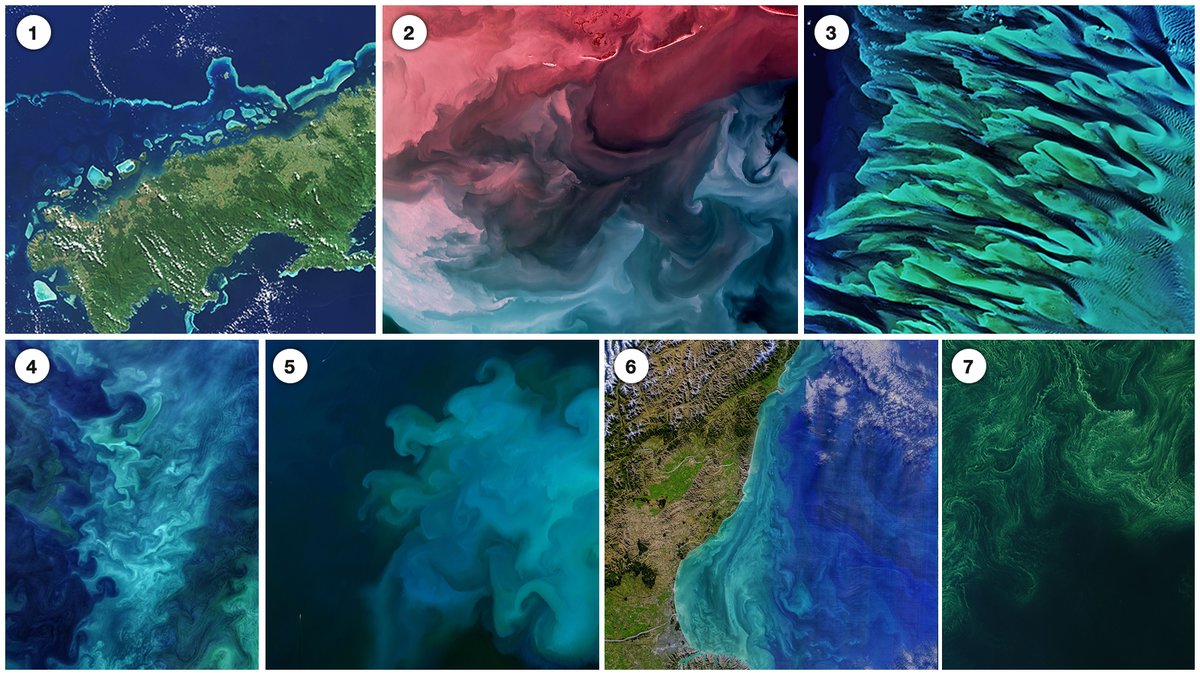Exploring the Oceans with Landsat
This Wallpaper Wednesday celebrates National Ocean Month by exploring how Landsat has contributed to the study of our planet's oceans for over 50 years. Download your favorite phone wallpaper and learn more about the wonders of the sea.

NASA Landsat Program
The NASA/USGS Landsat series of Earth-observing satellites has monitored our planet for 50 years. Verification: https://t.co/4p9BhINXeQ

-
We're combining #NationalOceanMonth with #WallpaperWednesday to share how Landsat views these vast bodies of water 🌊🔎
— NASA Landsat Program (@NASA_Landsat) June 7, 2023
Download your favorite phone wallpaper and explore how #Landsat has contributed to the study of our planet's oceans for over 50 years. pic.twitter.com/UMOsYD4ovK -
#DYK Vanua Levu is Fiji’s second largest island?
— NASA Landsat Program (@NASA_Landsat) June 7, 2023
This #Landsat 8 image of Fiji’s coast helped scientists understand how modern satellites can help study underwater corals even in the most remote regions. 🛰https://t.co/18jgsy1R09 pic.twitter.com/Yer5v8DXaw -
Jupiter or Earth? 🤔
— NASA Landsat Program (@NASA_Landsat) June 7, 2023
This #Landsat 8 infrared-image reveals sediment in the Gulf of Mexico off the Louisiana coast.
Scientists use satellite data to track swirling sediment in water bodies across the globe.https://t.co/xqm1v9ISi2 pic.twitter.com/Qgn5WYVXeE -
The #Landsat series of satellites also helps scientists monitor regions like the Great Bahama Bank.
— NASA Landsat Program (@NASA_Landsat) June 7, 2023
The features seen in this Landsat 8 image were sculpted by geologic processes and ocean creatures. 🌊https://t.co/lZpP3cL76E pic.twitter.com/XHI6ELSFnz -
Phytoplankton blooms can form striking patterns of blue and green seawater, such as those visible in this #Landsat 8 image of the Chukchi Sea.
— NASA Landsat Program (@NASA_Landsat) June 7, 2023
Observations from Landsat allow scientists to monitor these blooms on a global scale. 🌎https://t.co/UtS5XxYAWX pic.twitter.com/pmVjeJtQTl -
Phytoplankton float near the ocean surface & turn sunlight and carbon dioxide into sugars and oxygen & in turn, become food for the grazing zooplankton and fish. 🦠#Landsat 8 acquired this natural-color image of a phytoplankton bloom in the North Sea.https://t.co/M03aKGN2CS pic.twitter.com/QMPK9zsgdz
— NASA Landsat Program (@NASA_Landsat) June 7, 2023 -
#Landsat data also provides information about diverse landscapes all over the world.
— NASA Landsat Program (@NASA_Landsat) June 7, 2023
This Landsat 8 image reveals patchworks and swirls of color along the eastern coast of New Zealand’s South Island.https://t.co/tdclM9bYTQ pic.twitter.com/elRbjuHMtN -
Nearly every summer, colorful blooms of phytoplankton flourish in the Baltic Sea.
— NASA Landsat Program (@NASA_Landsat) June 7, 2023
The #Landsat series of satellites provides a unique perspective of these large, late-summer blooms of cyanobacteria.https://t.co/lo7obNaJSa pic.twitter.com/t1crRfSqwK
